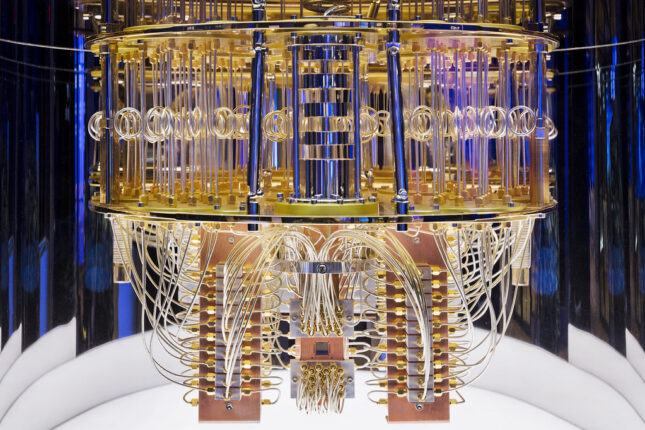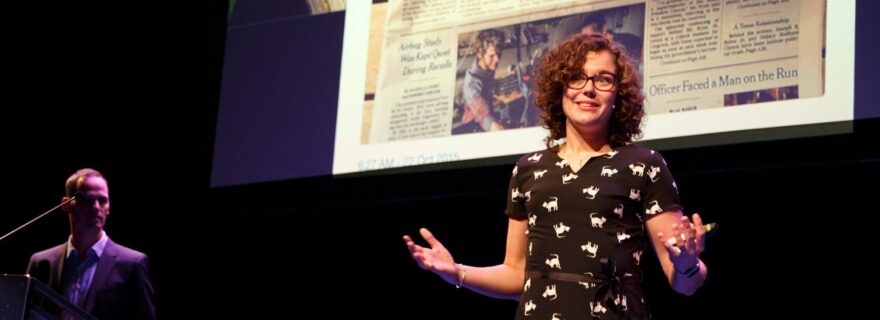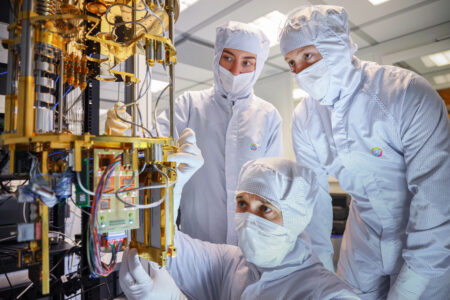The art of explaining the unexplainable
The Dutch government has made available 615 million euro for the national quantum agenda. Quantum technology is a hot topic. "People recognize the word quantum but associate it with Einstein. But what does it really mean?” Julia Cramer (33) is connecting quantum and society.
Qubits, cats in boxes, electron clouds, entanglement, superposition, the uncertainty principle. Is it still understandable? These are all concepts from the world of quantum physics, the incomprehensible part of physics that deals with the tiniest of tiny. Julia Cramer researches the ways in which we can have a conversation with people outside of science about this bizarre quantum world.
Quantum physics is the field of physics that describes how the world operates on the smallest scale. Knowledge of this enables a lot of modern technology, ranging from your mobile phone to laser pointers. Luckily, users do not need any understanding of the underlying physics. That is the job of the experts.
In the last couple of years, these experts have been trying to apply the rules of quantum physics in a new way: quantum technology. With quantum technology, so-called quantum computers can be developed. These computers operate completely differently from the normal computers.

But what can we do with these quantum computers? “That is the question that everyone always asks: How can we use it?”, says Julia Cramer, researcher at the University of Leiden. “We can explain what a qubit is, but people just want to know how it’s useful.”
She gives two examples of applications. The first is using quantum computers for extremely fast calculations. This is especially useful when computers have to do many calculations simultaneously, for example in computational chemistry. The second is quantum communication, where the unique properties of quantum can ensure extremely safe encryption of data.
Shaking things up
Because of these and more applications, the future impact of quantum technology seems to be big. But with the act of developing impactful technology, comes large responsibility, says Cramer. “If you think you can start shaking things up, you first need to make some preparations.”
That is why it is necessary to start a conversation with the public. “It’s not sufficient to simply tell your story to a journalist and not think about what it means for the person who will read the article. You have to think about perspectives such as ‘who is the reader?’or ‘do they maybe need more information?’ ”
Cramer investigates ways in which this conversation can be held. She looks at how quantum scientists reach out to the lay public about their research. “Which stories and words do experts use?” Then she looks at how the message actually comes across. “What does it mean for people? How does it change people’s attitude?”
There are still many open questions in the field. After all, it’s a relatively new area of science. “What I really enjoy is that there is very little already done. I can shape the field myself.” Despite the novelty, there is a lot of demand for this type of research. But for Cramer it is also a matter of passion: “Communication just fits me very well. I really like doing it and think it is important.”

Although she is doing research in science communication right now, Cramer originally came from physics. “I really feel like a physicist.” Her research involves both physics and communication. “Exactly the two sides that fit me. I have the possibility to work very interdisciplinarily. Both with people from the social sciences, as well as hardcore natural scientists.”
This combination also has its downsides. “Nobody knows exactly what I am doing,” she jokes, “but they all enjoy hearing about it.” Doing research in communication is something else than communicating about science. “I do a lot of science communication, because I just enjoy doing that, but that is not my job. My job is researching this science communication. You would not ask a professor of pedagogy to babysit.”
Coins and cats
One of the subjects that Cramer wants to investigate in the future, is the use of metaphors and examples. “Really good quantum examples are super complicated.” She wants to look at the famous thought experiment called Schrödingers Cat, for example.
These types of examples are also used by Cramer herself, to explain quantum to people who know nothing about it at all. “I really like doing lectures for children.” In these lectures, she explains a concept and then looks at whether kids can explain it themselves. “It is very insightful to see what they come up with.”
“Once I explained the concept of entanglement by using some coins, to explain that if you and I both flip a coin, we will always get opposing sides. Apparently I did not explain clearly enough that the coins were just a metaphor. One of the kids said that she would try it as soon as she was home. I realized that I did not emphasize enough that it is just pretending. It is nice to get that feedback.”




0 Comments
Add a comment